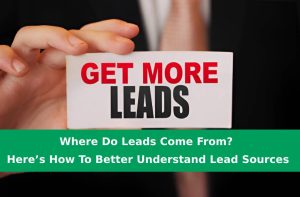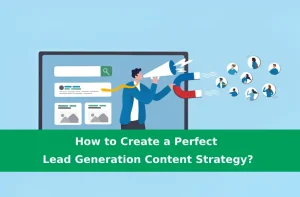In this era, customer behavior is unpredictable, and their attention is scattered across diverse platforms. In this situation, a sales funnel can be the foundation of stopping the leads from skipping away and turning them into loyal customers for your business.
No matter how big or small your business is, a well-designed sales funnel can turn your marketing efforts into measurable success. Sounds pretty important, right? So, here comes the question: What is a sales funnel? Let’s find out what a sales funnel is and how we can create a proper sales funnel in 2024.
What is a Sales Funnel?
A sales funnel is the journey of a potential customer to become a loyal customer. It is the blueprint of guiding them through a well-designed process that turns curiosity into commitment. Imagine you meet a complete stranger who just stumbled upon your brand. Now, you nurture them and guide them through a step-by-step process to convince them to buy your product or service. This process is the basics of a sales funnel. It helps businesses to design every interaction, from start to end, from the first conversation to the final purchase and beyond.
You know a funnel, right? Just like that, the initial stage is broad, where many people know about your brand. Then, you slowly keep narrowing down the list and work on people who are actually interested in your product or service. You need to keep it up until you can filter out the most potential customers and guide them to the purchase stage. Every stage of a sales funnel offers a crucial opportunity to connect, educate, and build a bond of trust with your customers.
Ultimately, the main goal of a sales funnel is to filter out your potential customers from the masses and convert them into loyal customers of your brand.
How Does a Sales Funnel Work?
A sales funnel works by guiding potential customers through a step-by-step series of stages, narrowing down the list from the initial stage to the final stage. Each steps are designed strategically to address the needs and concerns of the customer and motivate them to purchase your product or service.
Sounds too complicated, right? Don’t worry; we have prepared a complete breakdown of the whole sales funnel process so that you can understand how it actually works. Here we go:
Step 1: Awareness
This is the first step where the people first become aware of your brand’s product or service through your marketing efforts.
- Goal: The goal of this stage is to grab the attention of the masses and build your brand visibility.
- Mechanism: Start by introducing your product or service to the people through digital marketing, paid ads, SEO, or any other approach. When you scroll through social media, you see a bunch of advertisements, right? Just like that, you advertise your brand to let more people know about you and bring interested people to the sales funnel.
Step 2: Interest
In this step, some of the people who learn about your brand become interested to know more about you and what you offer.
- Goal: Create a spark of curiosity and provide more information to keep them engaged.
- Mechanism: After your strategic marketing makes people curious about your brand, you engage the interested prospects with valuable content. You can use webinars, newsletters, videos, blog articles, or any other strategic approach you may prefer. It allows the prospects to learn more about your brand and resonate with your content. Suppose you make an interesting ad that makes someone curious about your brand. They clicked the ad and registered to your email newsletter. This is how it works.
Step 3: Consideration
In this part, the prospects evaluate your provided information and see if your product or service is convenient for their requirements.
Goal: Build a bond of trust with the prospects and show them how your product or service is better than the others in the market.
Mechanism: You need to provide a detailed comparison of your product, free trials, customized demos, and user reviews to the prospect to convince them that you can provide the best solution to their problem. It will create a positive impact on the prospect, and they will compare what you are offering with the other competitors.
Step 4: Intent
This step starts as the prospect shows a clear intention of making a purchase. They may be confused at this stage and not be fully committed to you yet.
Goal: Encourage and guide them to the final decision through custom offers and solutions.
Mechanism: In this phase, you offer the prospects specialized discounts, limited-time offers, and other incentives to remove any confusion and strongly convince the prospects to make the purchase. It is similar to the situation when you go to the market and negotiate the price of a product you want to buy.
Step 5: Decision
The prospect has arrived at the bottom of the sales funnel at this stage. This is where the prospect decides
to make the purchase.
Goal: Finalize the sale and create a smooth transition to provide the prospect with a seamless purchase experience.
Mechanism: You need to make the purchasing process of the product or service as easy as possible. Offer popular and easy payment methods so that the customer faces no hassle while making the purchase. Assign responsive customer service if needed to guide the client through the transaction process.
Step 6: Retention
The purchase is already done, so what next? Now, the focus shifts from making them purchase your product to keeping in touch with the customer to keep them engaged and satisfied.
Goal: You must build customer loyalty and encourage them to purchase from you again when they need to.
Mechanism: You can send follow-up emails after the purchase like thank you for the purchase mail. Then, you can invite them to loyalty programs or ask for their feedback about your product/service after a while. You can even offer upsells, cross-sells, customer support, or any special promotion to make the customer come back to your brand.
Step 7: Advocacy
If the customers are satisfied with your overall product and service, they will become loyal advocates for your brand.
Goal: Turn the customers into brand ambassadors.
Mechanism: Encourage the customer to leave their reviews in the public groups or share their good experience with your brand on social media. You can also encourage them to refer your product or service to others by offering referral discounts and bonuses. You can also share the customer’s reviews to start your own cycle of brand advocacy.
More or less, these steps reflect every crucial part of the sales funnel’s mechanism. You can add or modify steps according to your strategy and business needs for better outputs.
How to Create a Sales Funnel: 10 Strategies
Creating a sales funnel is a sensitive task and requires careful understanding of the target audience, proper planning, flawless execution, and continuous optimization. You have to make sure that every stage of the funnel is leading the prospect from awareness to purchase.
Creating a sales funnel can be a complex task if you have no idea about the basics. Here are 10 effective strategies that will make it easier for you.
1. Identify and Understand Your Target Audience
Knowing your audience is the first and one of the most important tasks while creating a sales funnel. You have to make sure your marketing attracts the attention of that specific audience and that they can resonate with the ads. The whole sales funnel depends on this, so you can guess how important it is.
You can use surveys, analytics, or interviews to gather detailed insight into your target audience. Using that data, create buyer personas, including demographics, age range, pain points, preferred communication channels, and goals. It will help you to find out the most potential audience.
2. Create a Compelling Lead Magnet
Lead Magnets provide upftront value to the customers and act as a resource to find out the potential customers. To create a compelling lead magnet, you need to offer the audience something valuable for free. We all love free stuff, right? You can provide free eBooks, checklists, webinars, or discount codes.
But there is a chance, of course! What is your benefit in providing valuable things for free? The user must sign up for free to get that value. If it is an eBook, they need to sign up using their contact info, like email or phone number. You get your target leads, and the people get valuable stuff for free. It is a win-win for both parties, isn’t it?
3. Set Up an Effective Landing Page
This is a significant task, where you create a unique and effective landing page where your audience will sign up for the free service. It is like the door to enter your sales funnel, so you have to be creative here.
The design of your landing page must be clear and have an appealing visual. Here, you need to highlight how important your lead magnet is and why people should sign up for that. Instead of beating around the bushes, talk straight to the point and put a strong yet compelling CTA (Call To Action). Finally, integrate a sign up form to collect the contact information of the user.
4. Use Email Marketing to Nurture Leads
Who doesn’t use an email in this era? It is one of the most powerful communication tools worldwide. It is also a very popular medium of marketing or brand promotion. With proper use, you can guide your prospects from the top of the sales funnel to the bottom just by email.
You have to create an email sequence to deliver valuable content to the leads who signed up for your free service. Try to make content that will resonate with the readers and answer their real-life questions. Keep the content segmented and personalized so that the reader stays curious and doesn’t get bored.
5. Engage with High-Value Content
High quality content adds value to the readers by educating them about important factors they are interested in. Regular good content creates a bond between the reader and the brand that is based on trust and support.
You must develop a diverse content type, including blog posts, case studies, guidelines, and videos. Do proper research on the FAQs of the topic and identify what the people struggle with the most. Try to solve their real-life problems and provide clear & direct answers to their questions. Remember, your content should add value and be tailored for the different stages of the sales funnel.
6. Leverage Retargeting Ads
Often, you come across things you need but end up not buying them or forgetting about them. Retargeting ads are for those customers specifically who are interested in your brand but haven’t converted into customers yet.
Use retargeting ads, especially on social media like Facebook or Instagram, to re-engage previous visitors who didn’t turn into customers. You can offer them discounts, coupons, or high-value content to guide them further in the sales funnel.
7. Implement a Strong Call to Action (CTA)
Clear and compelling CTAs guide the prospects to the next stage of a sales funnel and encourage them to make a purchase. So, make your CTAs specific, benefit-driven, and action-oriented. No matter what action you are asking for, whether it is for signing up, downloading any resources, or making a purchase, the CTA must stand out and grab the user’s attention.
8. Offer Incentives to Close the Sale
Offering incentives is an effective way of alluring the prospects to make a purchase. It pushes them to the final stage of the sales funnel and encourages them to make a purchasing decision. To make it more effective, you can use limited-time offers, free trials, free shipping offers, or bundled offers. Your offer should be valuable from the prospect’s perspective; otherwise, this has a very slim chance of success. So, try to understand what your prospect needs most and provide an offer considering that.
9. Optimize for Mobile Devices
Most consumers browse the internet and purchase items using smartphones. So, make sure all the visuals, including the landing page and sign-up forms, are optimized for mobile phones. Overall, your sales funnel must be mobile-friendly. Your emails, newsletters, and all other elements must be easy to navigate using a mobile phone. Ensure a fast loading time, clear and visible CTA, and simple navigation for mobile phone users.
10. Continuous Adjustments
Your sales funnel and the tactics are not one-time planning. You need to take feedback and analyze the data from your previous campaigns to find out flaws or scopes of improvement. Implement the findings and solve the problems in the next campaign to keep improving your sales funnel outcomes. It will allow you to refine your strategies and come back stronger every time.
Master the Art of Sales Funnels With LeadSpider
LeadSpider is here to help you build a proper sales funnel more easily and efficiently. We already know that making a sales funnel has several steps, and they are pretty sensitive & complex. LeadSpider is the best lead-generation tool for any type of business. With its help, you don’t need to look for prospects randomly across various platforms.
Here are some of the most crucial features we offer to our LeadSpider users:
- Location Search: We offer a powerful location search feature that will help you find leads in your desired service area. Whether you are looking for local leads or across the whole country, location search will bring you the desired leads of your specific audiences in a flash. You just need to select the location and your desired industry, and boom! All your desired leads are in front of you.
- Advanced Filtering: What if you need to see customized results from your lead search? We have implemented an advanced filtering option that will customize your search results as you need. You can filter the output based on several criteria, including contact number, address, website, reviews, ratings, and more. Overall, we have more than 13 filtering options that you can use to find your specific leads.
- Real-Time Leads: This feature ensures that you get new leads in the search as soon as they are created. It will save you time and let you contact your leads instantly as they are created. You reach out to them faster than anyone, so nobody can steal your leads!
- User-Friendly Interface: Interface is one of the most crucial factors of software that has a high impact on user satisfaction. We have ensured a simple and minimal interface so that the users can get used to it ASAP. Every button is strategically placed in the most optimal and logical position, you don’t need to look for a button in the whole interface.
- Save and Export: You must need detailed documentation of your leads. Enlisting every lead you find with their details is time-consuming and inefficient. To save your day, LeadSpider offers an export feature where you can export your lead results in Excel format. It will allow you to use those data easily in any CRM system.
- Geo Mapping: Geo Mapping is the feature that allows you to see where the leads are located in the map. It is one of the most important for local businesses that need to find leads in specific areas. It will ensure that you are running your marketing campaigns in the right area.
- Mobile Friendly: One of the most important features in this era is mobile friendliness. A huge chunk of users access the internet using mobile phones. You don’t have you PC with you? It’s ok, you can still use LeadSpider on your mobile phone. Our software is fully optimized for both mobile and PC usage.
- Multilingual Support: Although English is an international language, some countries and regions prioritize and use their mother language for comfort and pride. Specially most of the local businesses and service providers use their national language to rename their organization. No worries, you can find leads using any language using LeadSpider.
That’s not all, we also feature competitor analysis, manage and track lead campaigns, and some other crucial features that will save your time and boost the productivity of your sales funnel.
Final Thoughts
So, what is the bottom line? To sum up the whole thing, a sales funnel is the process that turns a complete stranger into your loyal customer. There are some crucial steps where you need to be very careful, but you can depend on LeadSpider to make your sales funnel perform better and more efficiently.
FAQs
What is the purpose of a sales funnel?
The main purpose of a sales funnel is to guide your potential customers through a journey that is strategically designed from start to end that will make them purchase your product or service. In short, it converts interested people into your customers.
How can I improve the performance of my sales funnel?
If you already have a sales funnel designed, taking feedback from your previous marketing sessions and identifying the issues is the most important step. You need to find out what you are doing wrong and implement solutions in your next session to keep improving the performance of your marketing funnel.
How can I track the success of my sales funnel?
You need to monitor some key metrics to evaluate the performance of your sales funnel. Consider measuring traffic and lead generation, engagement rates, conversion rates, customer lifetime value (CLV), or other relevant metrics to find out how well your sales funnel is working.






